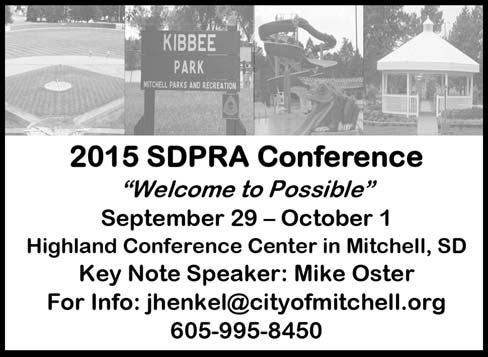
21 minute read
Supreme Court Highlights: What You Need to Know, and How Your City Will Be Affected
By Lisa Soronen, State and Local Legal Center
Hotel Registry Searches Need Subpoenas
Advertisement
In City of Los Angeles v. Patel the Court held 5-4 that a Los Angeles ordinance requiring hotel and motel operators to make their guest registries available for police inspection without at least a subpoena violates the Fourth Amendment.
The purpose of hotel registry ordinances is to deter crime — drug dealing, prostitution, and human trafficking — on the theory that criminals will not commit crimes in hotels if they have to provide identifying information.
According to the Court, searches permitted by the City’s ordinance are done to ensure compliance with recordkeeping requirements. While such administrative searches do not require warrants, they do require “precompliance review before a neutral decisionmaker.” Absent at least a subpoena, “the ordinance creates an intolerable risk that searches authorized by it will exceed statutory limits, or be used as a pretext to harass hotel operators and their guests.”
In dissent, Justice Scalia cited the SLLC’s amicus brief, which notes that local governments in at least 41 states have adopted similar ordinances. Eight states also have hotel registry statutes: Indiana, Florida, Massachusetts, Maine, New Hampshire, New Jersey, Wisconsin, and the District of Columbia.
It is likely following this decision that other record inspections done by governments outside the hotel registry context will also require subpoenas.
No Dog Sniffs after Traffic Stops
In a 6-3 decision in Rodriguez v. United States the Court held that a dog sniff conducted after a completed traffic stop violates the Fourth Amendment.
In Illinois v. Caballes the Court upheld a suspicionless dog search conducted during a lawful traffic stop stating that a seizure for a traffic stop “become[s] unlawful if it is prolonged beyond the time reasonably required to complete th[e] mission” of issuing a ticket for the violation. Officers may lengthen stops to make sure vehicles are operating safely or for an officer’s safety. A dog sniff, however, is aimed at discovering illegal drugs not at officer or highway safety.
In dissent, Justice Alito suggests savvy police officers can skirt the Court’s ruling by learning “the prescribed sequence of events even if they cannot fathom the reason for that requirement.”
Objectively Unreasonable is the Standard for Pretrial Detainee Excessive Force Claims
In Kingsley v. Hendrickson the Court held 5-4 that to prove an excessive force claim a pretrial detainee must show that the officer’s force was objectively unreasonable, rejecting the subjectively unreasonable standard that is more deferential to law enforcement.
Pretrial detainee Michael Kingsley claimed officers used excessive force in transferring him between jail cells to remove a piece of paper covering a light fixture that Kingsley refused to remove.
The objective standard applies to excessive force claims brought by pretrial detainees because in a previous case involving prison conditions affecting pretrial detainees, the Court used the objective standard to evaluate a prison’s

practice of double bunking. And the objective standard applies to those who, like Kingsley, have been accused but not convicted of a crime, but who unlike Kingsley are free on bail.
A standard more deferential to law enforcement applies to post-conviction detainees, who are housed with pretrial detainees, making this ruling difficult for jails to comply with. Following this decision it will be easier for pretrial detainees to bring successful excessive force claims against corrections officers.
Tax on Internet Purchases
In Direct Marketing Association v. Brohl Justice Kennedy wrote a concurring opinion stating that the “legal system should find an appropriate case for this Court to reexamine Quill.”
In 1992 in Quill Corp. v. North Dakota the Court held that states cannot require retailers with no in-state physical presence to collect use tax.
To improve tax collection, Colorado began requiring remote sellers to inform Colorado purchasers annually of their purchases and send the same information to the Colorado Department of Revenue. The Direct Marketing Association sued Colorado in federal court claiming that the notice and reporting requirements are unconstitutional under Quill. The question the Court decided was whether this case could be heard in federal court (as opposed to state court). The Court held yes unanimously. This case is significant for local governments because the Court’s most influential Justice expressed skepticism about whether Quill should remain the law of the land.
Content-Based Sign Codes Unconstitutional
In Reed v. Town of Gilbert the Supreme Court held unanimously that Gilbert’s Sign Code, which treats various categories of signs differently based on the information they convey, violates the First Amendment. The State and Local Legal Center (SLLC) filed an amicus briefin this case arguing that Reed’s argument, if adopted by the Court, will render sign codes unconstitutional nationwide.
While the SLLC argued in its amicus brief that the sign categories in this case are based on function, the Court concluded they are based on content. Content-based laws are only constitutional if they pass strict scrutiny — that is, if they are narrowly tailored to serve a compelling government interest. The various categories draw distinctions based on the message a speaker conveys. So under Gilbert’s sign code: “[i]f a sign informs its reader of the time and place a book club will discuss John Locke’s Two Treatises of Government, that sign will be treated differently from a sign expressing the view that one should vote for one of Locke’s followers in an upcoming election,

and both signs will be treated differently from a sign expressing an ideological view rooted in Locke’s theory of government.”
Gilbert’s Sign Code failed strict scrutiny because its two asserted compelling interests — preserving aesthetic and traffic safety — were “hopelessly underinclusive.” Temporary directional signs are “no greater an eyesore” and pose no greater threat to public safety than ideological or political signs.
Many, if not most communities, like Gilbert, regulate some categories of signs in a way the Supreme Court has defined as content-based in this opinion. Communities will need to change these ordinances. Justice Alito, in a concurring opinion, offers a list of rules that he and two other Justices believes would not be content-based. Justice Kagan, in a separate concurring opinion joined by two other Justices, is less optimist about the impact of this ruling on local government:
As the years go by, courts will discover that thousands of towns have ordinances [that contain subject matter exemptions like historical markers] many of them “entirely reasonable.” And as the challenges to them mount, courts will have to invalidate one after the other. (This Court may soon find itself a veritable Supreme Board of Sign Review.) And courts will strike down those democratically enacted local laws even though no one — certainly not the majority — has ever explained why the vindication of First Amendment values requires that result.
Significant Government Speech Case
In Walker v. Sons of Confederate Veteransthe Supreme Court held 5-4 that Texas may deny a proposed specialty license plate design featuring the Confederate flag because specialty license plate designs are government speech. Walker is of particular significance to state and local government because the Court did not narrow the 2009 landmark government speech case Pleasant Grove City, Utah v. Summum.
The Sons of Confederate Veterans (SCV) proposed a specialty license plate which featured a faint Confederate flag in the background and the organization’s logo, a square Confederate flag. After receiving public comment on the proposed plate the Texas Department of Motor Vehicles Board unanimously voted against issuing it noting that many members of the general public found the design offensive. SCV sued Texas claiming that specialty plates are private speech and that the Board engaged in unconstitutional viewpoint discrimination by refusing to approve its design.
The Court disagreed concluding that specialty license plates are government speech. It relied heavily on Summum, where the Court held that monuments in a public park are government speech and that a city may accept some privately donated monuments and reject others. First, just as governments have a long history of using monuments to speak to the public, states have a long history of using license plates to communicate messages. Second, just as observers of monuments associate the monument’s message with the land owner, observers identify license plate designs with the state because the name of the state appears on the plate, the state requires license plates, etc. Third, per state law, Texas maintains control over messages conveyed on specialty plates and has rejected at least a dozen designs, just as the city in Summum maintained control monument selection.
The result in Walker wasn’t a foregone conclusion. In a vigorous dissent, Justice Alito questions much of the majority’s analysis. He points out that only within the last 20 years has Texas allowed private groups to put messages on license plates and argues that Texas allows messages on license plates in order to make money, not to convey messages it supports.
But Justice Breyer, ever the pragmatist, insists that “government would not work” unless the government may determine “the content of what is says.”
“How could a city government create a successful recycling program if officials, when writing householders asking them to recycle cans and bottles, had to include in the letter a long plea from the local trash disposal enterprise demanding the contrary? How could a state government effectively develop programs designed to encourage and provide vaccinations, if officials also had to voice the perspective of those who oppose this type of immunization?”
Court Rules Against Employer in Religious Accommodation Case
In EEOC v. Abercrombie & Fitch Stores the Supreme Court held 8-1 that to bring a religious accommodation claim an applicant or employee need only show that his or her need for a religious accommodation was a motivating factor in an employment decision. The State and Local Legal Center (SLLC) filed an amicus brief, which NLC joined, arguing that to bring a failure to accommodate claim the applicant/employee should have to notify the employer of the need for a religious accommodation.
Abercrombie & Fitch’s “Look Policy,” prohibits employees from wearing “caps” because they are too informal for the store’s desired image. Samantha Elauf wore a head scarf to an interview at Abercrombie but didn’t ask for a religious accommodation. The assistant store manager who interviewed Elauf told the district manager she believed Elauf wore the headscarf for religious reasons. The district manager decided Elauf should not be hired as headwear worn for any reason violates Abercrombie’s “Look Policy.”
The Equal Employment Opportunity Commission (EEOC) sued Abercrombie alleging it violated Title VII by failing to accommodate Elauf’s religious beliefs. The Tenth Circuit held in favor of Abercrombie, finding that an applicant/employee must inform the employer about the need for a religious accommodation.
The Court concluded that to bring a religious accommodation claim an applicant/employee need not show that the employer had “actual knowledge” of the need for an accommodation. Instead the employee/ applicant only must show that his or her need for an accommodation was a motivating factor in the employer’s decision. Title VII prohibits employers from taking an adverse employment action “because of” religion. While “because of” usually means but-for causation, Title VII has a more relaxed standard that prohibits even making religion a motivating factor in an employment decision. Simply put, the Court would not add an “actual knowledge” requirement to Title VII.
According to the Court, while a knowledge requirement could not be added to the motive requirement, arguably the motive requirement cannot be met unless the employer at least suspects the practice in question is religious. Here Abercrombie at least suspected Elauf wore a head scarf for religious reasons so the Court did not decide whether the motive requirement could be met without knowledge. Justice Alito, in a concurring opinion, stated that the Court should have decided this question–in the negative.
A Look Ahead: Luis v. United States Will Decide
How Far Asset Forfeitures May Go
Even though her crimes aren’t violent and horrific like many criminal defendants who end up in the Supreme Court, it is hard to feel sorry for Sila Luis. But her point is that she has rights, regardless.
She was indicted on charges related to $45 million in Medicare fraud. Unsurprisingly, her personal assets amounted to much less than $45 million. The federal government sought to freeze the use of her assets not traceable to the fraud. She wanted to use them to hire an attorney.
The question in Luis v. United States is whether not allowing a criminal defendant to use assets not traceable to a criminal offense to hire counsel of choice violates the Sixth Amendment’s right to counsel.
This case is relevant to state and local government for a few reasons. First, while the asset forfeiture in this case likely went to reimburse the federal government for the

Medicaid fraud, generally, state and local law enforcement receive asset forfeitures. Second, some state asset forfeiture laws, like the federal statute in this case, allow untainted assets to be substituted. Third, in some instances state and local governments, like the federal government in this case, are the victim of a fraud and seek to recoup as much of their losses as possible.
This case comes on the heels of last year’s Kaley v. United States, where the Supreme Court held 6-3 that defendants may not use frozen assets which are the fruits of criminal activities to pay for an attorney. Luis argues that it is “inconceivable” that she may not use “her own legitimately-earned assets to retain counsel.” The federal government responded that per her reasoning criminal defendants “could effectively deprive her victims of any opportunity for compensation simply by dissipating her illgotten gains.”
The district court, affirmed by the Eleventh Circuit, agreed with the United States using this example:
“[S]uppose . . . a bank robber [steals $100,000 and has] spent the $100,000 that he stole. It just so happens, however, that he has another $100,000 that he obtained legitimately. Should his decision to spend the $100,000 he stole mean that he is free to hire counsel with the other $100,000 when Congress has authorized restraint of those substitute assets? The reasonable answer is no. The bank has the right to have those substitute, untainted assets kept available for return as well.”
Same-Sex Couples Now Have A Constitutional Right to Marry
Obergefell v. Hodges will be celebrated and condemned internationally.
In a 5-4 decision written by Justice Kennedy, the Supreme Court held that same-sex couples have a constitutional right to marry. All state laws and court decisions banning same-sex marriage are now invalid. The National League of Cities signed onto an amicus brief in this case supporting the couples.
Justice Kennedy’s opinion can be described as a celebration of marriage itself. “No union is more profound than marriage, for it embodies the highest ideals of love, fidelity, devotion, sacrifice and family.”
More specifically, the majority opinion offers four principles that demonstrate why the fundamental right to marry applies with equal force to same-sex couples. First,

the right to choose who you marry is “inherent in the concept of individual autonomy.” Second, because the right to marry is “unlike any other in its importance,” it should not be denied to any two-person union. Third, marriage between same-sex couples safeguards children and families just as it does for opposite-sex couples. Finally, marriage is a keystone of American social order from which no one should be excluded.
The Court relied on the Constitution’s Fourteenth Amendment Due Process Clause and the Equal Protection Clause in its opinion. In previous marriage cases like Loving v. Virginia, invalidating bans on interracial marriage, the Court relied on both Clauses. The Court did not state what standard of review it applied to decide this case.
The Court rejected the argument that sufficient debate had not occurred over this issue, noting that “individuals need not await legislative action before asserting a fundamental right.”
After acknowledging that many may take the view that same-sex marriage should not be condoned on religious grounds, the Court stated that the First Amendment protects this view and the views of religious organizations.
Justice Kennedy’s final words in his majority opinion effectively summarize his opinion:
“[The] hope [of the same-sex couples in this case] is not to be condemned to live in loneliness, excluded from one of civilization’s oldest institutions. They ask for equal dignity in the eyes of the law. The Constitution grants them that right.”
Chief Justice Roberts and Justices Scalia, Thomas, and Alito dissented.
Federal Government Wins Health Care Case: ACA Subsidies Continue
The third time’s a charm for the Affordable Care Act (ACA). King v. Burwell is the first complete victory for the law.
In 6-3 decision, the Supreme Court ruled that health insurance tax credits are available on the 34 Federal Exchanges. The Court’s opinion focused largely on the consequences of ruling to the contrary: the destruction of health insurance markets.
Chief Justice Roberts, writing for the majority, began his opinion by pointing out that the Affordable Care Act relies on three reforms: making sure health insurance is available to everyone regardless of their heath and not charging higher premiums depending on health; requiring everyone to be insured; and offering tax credits to those with low incomes so they can afford insurance. If only the first reforms were to be implemented, a well-documented economic “death spiral” would occur, wherein health insurance premiums skyrocket because only the sick buy insurance.
The ACA allows the states and the federal government to sell insurance on health care exchanges. The ACA states that tax credits are available when insurance is purchased through “an exchange established by the state.”
So the technical legal question in this case was whether a Federal Exchange is “an exchange established by the state” that may offer tax credits.
The Supreme Court said yes. The Court first concluded that the above language is ambiguous. But by looking at it in the context of the entire statute, the meaning of the language became clearer. Specifically, if tax credits weren’t available on Federal Exchanges “it would destabilize the individual insurance market in any state with a Federal Exchange, and likely create the very ‘death spirals’ that Congress designed the Act to avoid.”
The Chief Justice’s analysis is simple and pragmatic:
“Congress passed the Affordable Care Act to improve health insurance markets, not to destroy them. If at all possible, we

must interpret the Act in a way that is consistent with the former, and avoids the latter. [The statutory language at issue] can fairly be read consistent with what we see as Congress’s plan, and that is the reading we adopt.”
As a result of this decision, the status quo remains: if an individual otherwise eligible for a tax credit buys health insurance on a State Exchange or a Federal Exchange, the tax credit will be available.
Justices Kennedy, Ginsburg, Breyer, Sotomayor, and Kagan joined the majority opinion. Justices Scalia, Thomas, and Alito dissented.
Fair Housing Act Disparate Impact Claims Recognized
If you were surprised by the Supreme Court’s ruling in the Affordable Care Act Case, you may have even been more surprised by the Court’s ruling in the Fair Housing Act case.
In Texas Department of Housing and Community Affairs v. Inclusive Communities Project the Supreme Court held 54 that disparate-impact claims may be brought under the Fair Housing Act (FHA). All Federal Circuit Courts of Appeals had decided this issue, ruling that such claims were possible. The Supreme Court was expected to come to the opposite conclusion (or else why would they have taken this case?). Having taken up this question twice before, only to have the cases settle, the Court has finally resolved it.
While state and local governments are more likely to be sued under the FHA, they do occasionally sue others for violating it. Justice Kennedy pointed out at the end of his majority opinion that the City of San Francisco filed an amicus brief supporting disparate-impact liability under the FHA, despite being a “potential defendant.”
In a disparate-impact case, a plaintiff is claiming that a particular practice isn’t intentionally discriminatory but instead has a disproportionately adverse impact on a particular group.
The Inclusive Communities Project (ICP) sued the Texas Department of Housing and Community Affairs, claiming that its selection criteria for federal low-income tax credits in Dallas had a disparate impact on minorities, in violation of the FHA. Specifically, ICP claimed the Department was giving too many tax credits to low-income housing in predominately black inner-city areas compared to predominately white suburban neighborhoods. While 92% of low-income housing tax credits in Dallas were located in census tracts with less than 50% white residents, federal law favors distribution of such tax credits in low-income areas.

The Court held that disparate impact claims are cognizable under the FHA. In prior cases, the Court held that disparate impacts claims are possible under Title VII (prohibiting race, etc. discrimination in employment) and the Age Discrimination in Employment Act relying on the statutes’ “otherwise adversely affect” language. The FHA uses similar language — “otherwise make unavailable” — in prohibiting race, etc. discrimination in housing. And Congress seems to have acknowledged that disparate impact claims are possible under the FHA. Congress amended the FHA in 1988 to include “three exemptions from liability that assume the existence of disparateimpact claims.” (By 1988, nine Courts of Appeals had held ruled in favor of such claims.) Finally, the Court reasoned that recognizing disparate-impact claims is “consistent with the FHA’s central purpose” — to eradicate housing discrimination.
Justice Kennedy opined that when the lower court takes this case up again it “may be seen simply as an attempt to second-guess which of two reasonable approaches a housing authority should follow in the sound exercise of its discretion in allocating tax credits for low income housing.” To make sure disparate-impact lawsuits aren’t successful in this instance, he suggests the following: first, governments and developers should be able to maintain a housing policy that they can prove is necessary to achieve a valid interest; second, disparate-impact claims that, like this one, rely on a statistical disparity will fail if the plaintiff can’t prove that the defendant’s policy caused the disparity; and third, remedies must be consistent with the constitution and not include quotas.
Why You Should Care About SCOTUS’s Recent Case Involving Raisins
In Horne v. Department of Agriculture the Supreme Court held 8-1 that the federal government violated the Fifth Amendment Takings Clause by physically setting aside a percentage of a grower’s raisin crop each year without pay. At least six other agriculture set aside programs are in trouble as a result of this case. But what about its impact on state and local government?
Horne is a complicated case with four issues. The holding most relevant to state and local government is that taking an interest in personal property (here, raisins) rather than land is a per se taking rather than a “more flexible and forgiving” regulatory taking. As the International Municipal Lawyers Association amicus brief points out,
an argument can now be made that towing illegal parked cars, removing abused and neglected pets, confiscating drugs or pirated copyrighted materials, and confiscating guns from felons might amount to
takings requiring just compensation.
Per the Agricultural Marketing Act, raisin growers are required in certain years to give a percentage of their crops to the federal government free of charge to maintain a stable market for raisins. Raisin growers sometimes receive proceeds from the sale of set-aside raisins. The Hornes refused to set aside raisins for the federal government and were fined the fair market value of the raisins for failing to comply with the order. The Hornes sued, claiming the setaside requirement was an unconstitutional taking.
The Court first held that the appropriation of personal property is a per se taking just like the appropriation of land, stating that the text, history and precedents interpreting the Takings Clause don’t suggest a different rule. The Court next concluded the government could not avoid paying just compensation because the growers in this case had a contingent interest in the value of the set aside raisins. “The fact that the growers retain a contingent interest of indeterminate value does not mean there has been no physical taking, particularly since the value of the interest depends on the discretion of the taker, and may be worthless, as it was for one of the two years at issue here.” To the question of whether the government’s mandate to turn over raisins as a condition of participating in commerce is a per se taking, the Court said yes in this case. It is not enough that the growers voluntarily chose to sell raisins rather than wine.
Only five Justices agreed that the Hornes’ just compensation should be the fair market value of the set aside raisins (and that the fine for disobeying the order should be dropped). Three Justices would have sent the case back to the lower court to determine whether, through the price supports for the raisins the Hornes did not have to set aside, they received just compensation.
Only time will tell whether people will try to bring takings claims against state and local governments, citing Horne for government seizures of personal property more common than raisins — and whether those claims will be successful.
Lisa Soronen is the Executive Director of the State and Local Legal Center and a regular contributor to CitiesSpeak.
Reprinted from CitiesSpeak.org, the official blog of the National League of Cities.











